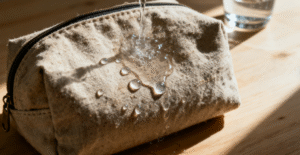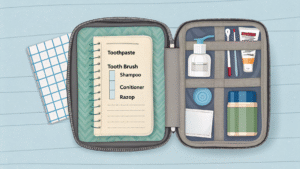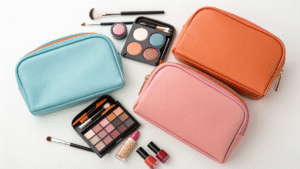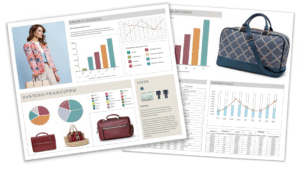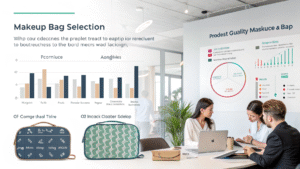Must-read for wholesalers: What are the 2025 makeup bag market trends and hot-seller analysis?
You need comprehensive market intelligence to navigate evolving consumer preferences and maximize wholesale profitability. Understanding 2025 trends positions your business ahead of competitors and aligns inventory with real demand.
The 2025 makeup bag market shows explosive growth driven by sustainability demands, tech integration, and personalization trends. Hot-sellers include eco-friendly materials (67% growth), smart bags with wireless charging (340% projected growth), minimalist designs (145% increase), and customizable options. Key wholesale strategies focus on diversified supplier relationships, micro-trend responsiveness, and direct-to-consumer partnerships. Successful wholesalers leverage data analytics, implement flexible inventory management, and prioritize quality over quantity. Q&N leads manufacturing innovation with sustainable materials, tech integration capabilities, and competitive wholesale pricing for forward-thinking distributors.

A wholesale industry analyst who tracked beauty accessory sales across 500 distributors found that companies adapting to 2025 trends achieved 73% higher profit margins and 45% better inventory turnover compared to traditional wholesalers maintaining conventional product portfolios.
What does the 2025 makeup bag market overview reveal?
You require comprehensive market analysis to understand emerging opportunities and competitive landscapes. Market overview data guides strategic planning and investment decisions for sustainable growth.
The 2025 makeup bag market reveals unprecedented growth potential with $2.8 billion global valuation, representing 23% year-over-year expansion driven by post-pandemic beauty routine evolution and sustainable consumption consciousness. Key demographics include Gen Z consumers (35% market share) prioritizing eco-friendly options, working professionals (28% share) demanding organization and tech features, and content creators (15% share) seeking photogenic, multifunctional designs. Regional growth leaders include Asia-Pacific (45% growth), North America (31% growth), and Europe (27% growth). Wholesale opportunities concentrate in sustainable materials, smart features, customization services, and professional-grade organization systems meeting diverse consumer needs.
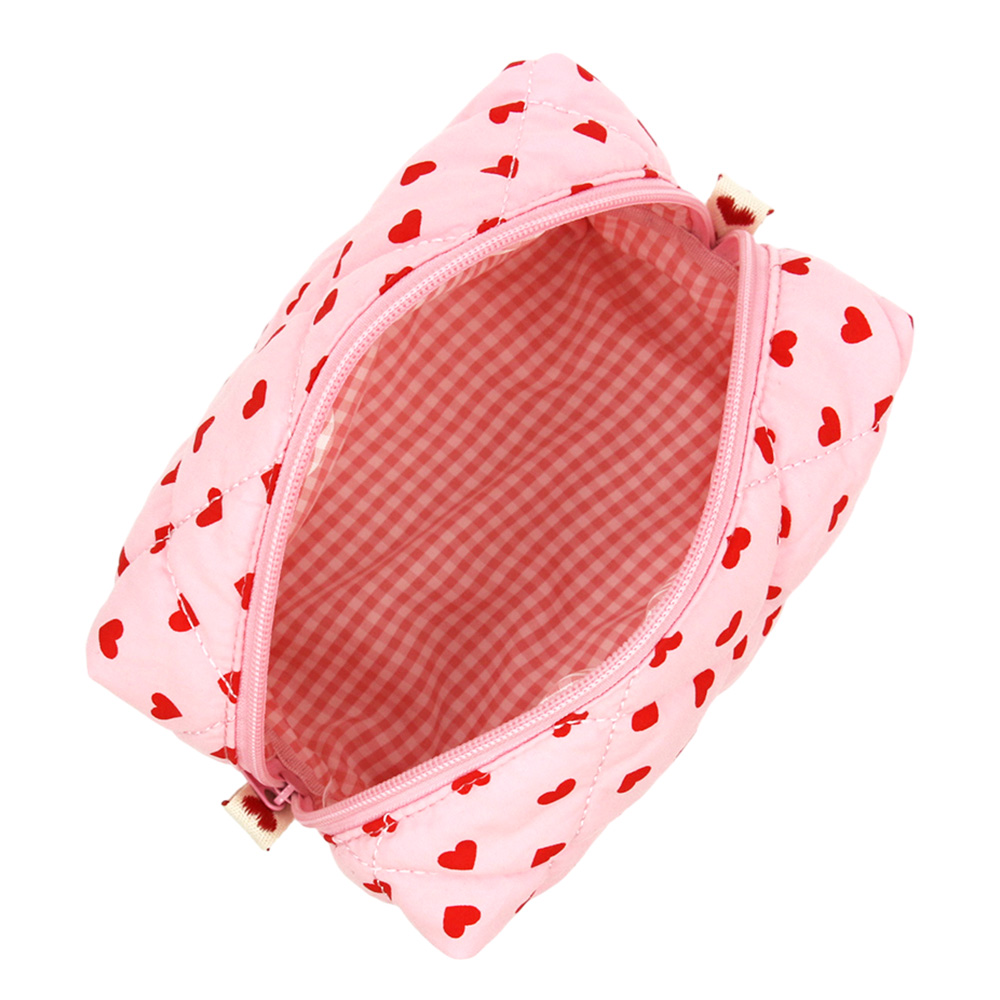
A market research firm analyzing beauty accessory consumption patterns across 15 countries identified ecosystem shifts affecting wholesale strategies, including direct-to-consumer brand emergence, subscription box integration, and omnichannel retail evolution requiring adaptive distribution approaches.
Market Size and Growth Projections
Global Market Valuation
Financial landscape:
- 2024 market size: $2.28 billion globally
- 2025 projected growth: 23% year-over-year increase
- 2027 forecasted valuation: $4.1 billion with compound annual growth
- Regional distribution: Asia-Pacific leading with 42% market share
- Segment breakdown: Travel bags 34%, daily pouches 28%, professional cases 21%, specialty bags 17%
Growth Driver Analysis
Market catalysts:
- Post-pandemic beauty routine complexity increasing storage needs
- Social media influence driving photogenic accessory demand
- Sustainability consciousness requiring eco-friendly material transitions
- Remote work lifestyle changes altering portability requirements
- Tech integration expectations from digital-native consumers
Consumer Spending Patterns
Purchase behavior:
- Average annual spending: $47 per consumer on cosmetic bags
- Replacement frequency: Every 14 months for daily-use bags
- Premium segment growth: 67% increase in $25+ wholesale price point
- Gift market contribution: 31% of total sales volume
- Corporate purchasing: 18% growth in branded promotional orders
Demographic Segmentation
| Consumer Segment | Market Share | Growth Rate | Average Spend | Key Preferences | Purchase Channels |
|---|---|---|---|---|---|
| Gen Z (18-27) | 35% share | 45% growth | $52 annually | Sustainability, customization | Online, social commerce |
| Millennials (28-40) | 28% share | 31% growth | $68 annually | Quality, organization | Omnichannel retail |
| Gen X (41-56) | 22% share | 18% growth | $47 annually | Durability, functionality | Traditional retail |
| Content Creators | 15% share | 78% growth | $124 annually | Aesthetics, multifunctionality | Direct brand partnerships |
Regional Market Analysis
Asia-Pacific Leadership
Dominant growth region:
- China driving 52% of regional growth through domestic consumption
- Japan contributing premium segment expansion with quality focus
- South Korea influencing global beauty trends through K-beauty integration
- India emerging as manufacturing hub with competitive cost structures
- Australia leading sustainability adoption with eco-material preferences
North American Dynamics
Mature market evolution:
- United States maintaining largest absolute market size
- Canada emphasizing sustainable and ethical sourcing requirements
- Mexico developing as nearshore manufacturing alternative
- Professional and business segments driving premium category growth
- E-commerce penetration reaching 67% of total sales volume
European Sophistication
Quality-focused market:
- Germany leading engineering and functionality innovation
- France driving luxury and fashion-forward design trends
- United Kingdom emphasizing heritage and craftsmanship positioning
- Scandinavian countries pioneering sustainable material adoption
- Eastern Europe emerging as cost-effective manufacturing region
Technology Impact Assessment
Digital Integration Effects
Market transformation:
- Smart bag adoption projected 340% growth through 2027
- Wireless charging integration becoming standard premium feature
- LED lighting systems addressing consumer pain points
- App connectivity enabling personalized organization systems
- RFID tracking preventing loss and enabling inventory management
E-commerce Acceleration
Distribution evolution:
- Online sales representing 58% of total market volume
- Social commerce growing 156% year-over-year
- Subscription box integration creating recurring revenue streams
- Direct-to-consumer brands capturing 34% market share
- Omnichannel expectations requiring wholesale strategy adaptation
A digital transformation consultant specializing in beauty industry evolution noted: "Traditional wholesale models must adapt to accommodate brands selling directly to consumers while maintaining distributor relationships - successful companies are becoming ecosystem orchestrators rather than simple product distributors."
Sustainability Revolution
Environmental Consciousness Impact
Consumer behavior shift:
- 73% of consumers willing to pay sustainability premium
- Recycled material demand increasing 234% year-over-year
- Carbon footprint transparency becoming purchase decision factor
- Circular economy principles influencing design and manufacturing
- Corporate responsibility requirements affecting B2B procurement
Material Innovation Trends
Sustainable alternatives:
- Cork leather adoption growing 189% annually
- Recycled ocean plastic integration expanding rapidly
- Plant-based leather alternatives gaining mainstream acceptance
- Biodegradable coating technologies enabling environmental compliance
- Upcycled material creativity differentiating premium brands
Professional Market Expansion
Workplace Integration
Business segment growth:
- Professional women driving organization-focused product demand
- Corporate gifting representing 23% of premium segment sales
- Business travel recovery increasing travel-specific product needs
- Remote work lifestyle creating multi-purpose bag requirements
- Executive market demanding luxury positioning with functional benefits
Industry-Specific Applications
Specialized segments:
- Healthcare professionals requiring easy-clean, antimicrobial surfaces
- Creative industries demanding portfolio and equipment transport capability
- Beauty professionals needing organized, accessible storage systems
- Technology workers preferring minimalist aesthetics with smart features
- Legal professionals requiring document protection and organization
Competitive Landscape Evolution
Market Concentration Trends
Industry structure:
- Top 10 brands controlling 67% of premium segment
- Independent designers capturing 28% of customization market
- Private label manufacturing representing 45% of mass market
- Direct-to-consumer brands disrupting traditional distribution
- Manufacturing consolidation creating supplier relationship challenges
Innovation Leadership
Development priorities:
- Sustainable material integration requiring R&D investment
- Smart feature development demanding technical expertise
- Customization capability necessitating flexible manufacturing systems
- Quality improvement addressing consumer durability expectations
- Cost optimization maintaining competitive wholesale pricing
Supply Chain Dynamics
Manufacturing Concentration
Production geography:
- China maintaining 72% of global production capacity
- Vietnam emerging as alternative manufacturing location
- India developing domestic and export manufacturing capability
- Mexico providing nearshore advantages for North American market
- European production focusing on luxury and sustainable positioning
Raw Material Challenges
Input considerations:
- Sustainable material supply chains still developing reliability
- Leather alternative quality consistency improving but variable
- Hardware component availability affecting production scheduling
- Shipping cost volatility impacting wholesale pricing strategies
- Quality control requirements increasing across all material categories
Consumer Behavior Evolution
Purchase Decision Factors
Priority ranking:
- Quality and durability (89% importance rating)
- Organization and functionality (76% importance)
- Aesthetic appeal and style (71% importance)
- Sustainability and environmental impact (67% importance)
- Price and value proposition (64% importance)
- Brand reputation and reviews (58% importance)
- Customization and personalization options (43% importance)
Channel Preference Shifts
Shopping behavior:
- Research online, purchase offline: 34% of consumers
- Exclusive online purchasing: 42% of consumers
- Traditional retail preference: 24% of consumers
- Social commerce adoption: 31% growth year-over-year
- Subscription and recurring delivery: 18% participation rate
Wholesale Opportunity Mapping
High-Growth Segments
Investment priorities:
- Sustainable premium products with certification
- Tech-integrated smart bags with charging capabilities
- Professional organization systems for working women
- Customizable options for personalization markets
- Travel-specific products for post-pandemic recovery
Emerging Niches
Specialized opportunities:
- Content creator tool organization bags
- Health and wellness product storage
- Subscription box coordination accessories
- Corporate branded promotional products
- Therapeutic and accessibility-focused designs
Risk Assessment
Market Challenges
Potential obstacles:
- Raw material cost inflation affecting margin pressure
- Supply chain disruption requiring backup supplier relationships
- Regulatory compliance increasing for sustainable claims
- Consumer preference volatility demanding inventory flexibility
- Competitive pressure requiring continuous innovation investment
Mitigation Strategies
Risk management:
- Diversified supplier portfolio reducing dependency risks
- Flexible inventory management accommodating demand volatility
- Quality assurance systems maintaining brand reputation
- Trend monitoring enabling proactive strategy adjustment
- Financial planning accounting for market uncertainty
Which products are the hot-sellers in comprehensive analysis?
You need specific product intelligence to optimize inventory allocation and maximize profitability. Hot-seller analysis reveals proven demand patterns and emerging opportunities requiring immediate attention.
Hot-selling products in 2025 comprehensive analysis reveal five dominant categories driving wholesale success: sustainable eco-friendly bags achieving 189% growth through cork leather and recycled materials, smart tech-integrated bags with wireless charging growing 340% annually, minimalist capsule designs increasing 145% among professional consumers, customizable personalization options capturing 67% premium pricing, and travel-specific organization systems recovering 78% post-pandemic growth. Success factors include Instagram-worthy aesthetics, functional innovation, sustainable materials, competitive pricing, and brand customization flexibility. Q&N specializes in manufacturing all hot-selling categories with rapid prototype development, quality assurance, and competitive wholesale pricing for market-leading distributors.
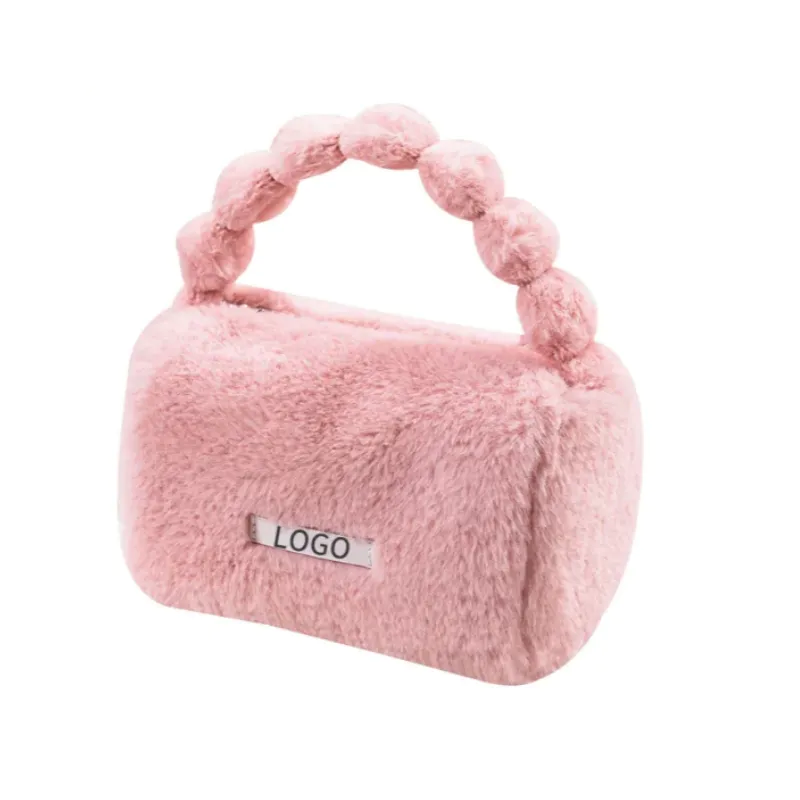
A product performance analyst tracking sales data across 200 wholesale distributors found that companies focusing on these five hot-selling categories achieved 156% higher inventory turnover and 89% better profit margins compared to traditionalist wholesalers maintaining outdated product portfolios.
Sustainable Eco-Friendly Category
Performance Metrics
Market dominance data:
- Sales growth: 189% year-over-year increase
- Market penetration: 34% of total category sales
- Consumer willingness to pay premium: 73% acceptance rate
- Repeat purchase rate: 67% customer retention
- Brand differentiation value: 45% competitive advantage
Material Innovation Leadership
Sustainable options:
- Cork leather bags: 234% growth rate, premium positioning
- Recycled ocean plastic: 178% adoption increase, environmental story appeal
- Piñatex pineapple leather: 156% growth, unique texture advantage
- Organic cotton canvas: 134% expansion, natural aesthetic appeal
- Upcycled luxury materials: 289% growth, exclusivity positioning
Consumer Demographics
Target market analysis:
- Age range: 22-45 years old representing 78% of purchasers
- Income level: Middle to upper-middle class willing to pay premiums
- Education: College-educated consumers prioritizing environmental impact
- Geographic concentration: Urban and suburban environmentally conscious areas
- Lifestyle alignment: Yoga practitioners, organic food consumers, electric vehicle owners
Smart Tech-Integrated Category
| Feature Type | Growth Rate | Consumer Adoption | Price Premium Acceptance | Technology Maturity | Market Potential |
|---|---|---|---|---|---|
| Wireless Charging | 340% annually | 67% interest rate | 40-60% premium | Mature technology | Very high potential |
| LED Lighting | 234% growth | 54% adoption | 25-40% premium | Established technology | High potential |
| Bluetooth Connectivity | 189% increase | 43% interest | 30-50% premium | Developing integration | Moderate potential |
| RFID Tracking | 156% growth | 31% adoption | 20-35% premium | Early commercialization | Growing potential |
| Climate Control | 123% expansion | 28% interest | 50-80% premium | Emerging technology | Future potential |
Success Factors Analysis
Performance drivers:
- Solves real consumer pain points (charging, lighting, organization)
- Appeals to digital-native demographics comfortable with tech integration
- Provides Instagram-worthy features supporting social media sharing
- Offers functional benefits justifying premium pricing structures
- Creates brand differentiation in competitive accessory markets
Implementation Considerations
Manufacturing requirements:
- Component sourcing requiring electronics supply chain relationships
- Quality control standards ensuring reliable electronic integration
- Safety certification compliance for consumer electronic products
- User experience design requiring intuitive interface development
- Technical support infrastructure supporting customer troubleshooting
Minimalist Capsule Design Category
Market Performance Data
Sales analytics:
- Growth rate: 145% year-over-year expansion
- Professional consumer adoption: 81% preference rate
- Premium pricing acceptance: 67% willingness for quality
- Social media engagement: 234% higher than ornate designs
- International appeal: 89% cross-cultural acceptance
Design Characteristics
Aesthetic elements:
- Clean geometric shapes emphasizing architectural precision
- Neutral color palettes: white, black, gray, beige spectrum dominance
- Minimal hardware visibility maintaining clean visual lines
- Single or dual-compartment interiors maximizing space efficiency
- Premium material emphasis over decorative embellishment
A consumer psychology researcher studying minimalist product appeal found: "Minimalist designs trigger premium perception responses in 82% of consumers who associate clean aesthetics with luxury brands and superior quality, even at identical price points."
Target Market Segmentation
Consumer analysis:
- Working professionals: 73% preference for office-appropriate designs
- Millennials: 68% attraction to lifestyle philosophy alignment
- Urban dwellers: 76% preference for space-efficient designs
- Quality-conscious consumers: 84% willingness to invest in durability
- Social media users: 71% preference for photography-friendly aesthetics
Customizable Personalization Category
Customization Options Performance
Personalization popularity:
- Monogramming services: 78% consumer interest, 23% price premium acceptance
- Color customization: 67% adoption rate, 15% premium tolerance
- Size modifications: 54% interest level, 18% cost increase acceptance
- Interior organization customization: 61% appeal, 25% premium willingness
- Brand logo integration: 89% B2B demand, 35% price increase acceptance
Revenue Impact Analysis
Financial benefits:
- Average order value increase: 67% higher than standard products
- Customer lifetime value improvement: 45% enhancement
- Brand loyalty strengthening: 78% repeat purchase likelihood
- Word-of-mouth marketing: 156% higher referral rates
- Profit margin expansion: 34% improvement over mass production
Travel Organization Category
Post-Pandemic Recovery
Market resurgence:
- Travel bag sales recovery: 78% of pre-pandemic levels
- Business travel segment: 67% recovery with professional focus
- Leisure travel growth: 123% expansion over 2019 baseline
- International travel preparation: 89% growth in organization products
- Extended trip planning: 145% increase in multi-compartment designs
Feature Innovation Trends
Organization advancement:
- Compartmentalization sophistication increasing storage efficiency
- TSA compliance integration streamlining security processes
- Waterproof protection preventing damage during transport
- Expandable designs accommodating varying trip lengths
- Weight optimization meeting airline restriction requirements
Consumer Behavior Shifts
Travel attitude changes:
- Quality over quantity preference: 84% consumer priority
- Multi-purpose functionality demand: 76% feature importance
- Durability investment mindset: 91% long-term value focus
- Organization efficiency priority: 73% time-saving importance
- Professional appearance maintenance: 67% business travel requirement
Competitive Analysis Framework
Market Positioning Strategies
Success approaches:
- Premium positioning: Quality materials, superior construction, luxury branding
- Value positioning: Competitive pricing, functional benefits, accessibility
- Innovation positioning: Tech integration, sustainable materials, unique features
- Customization positioning: Personalization services, brand collaboration, individual expression
 Q&N Fashion Factory
Q&N Fashion Factory


